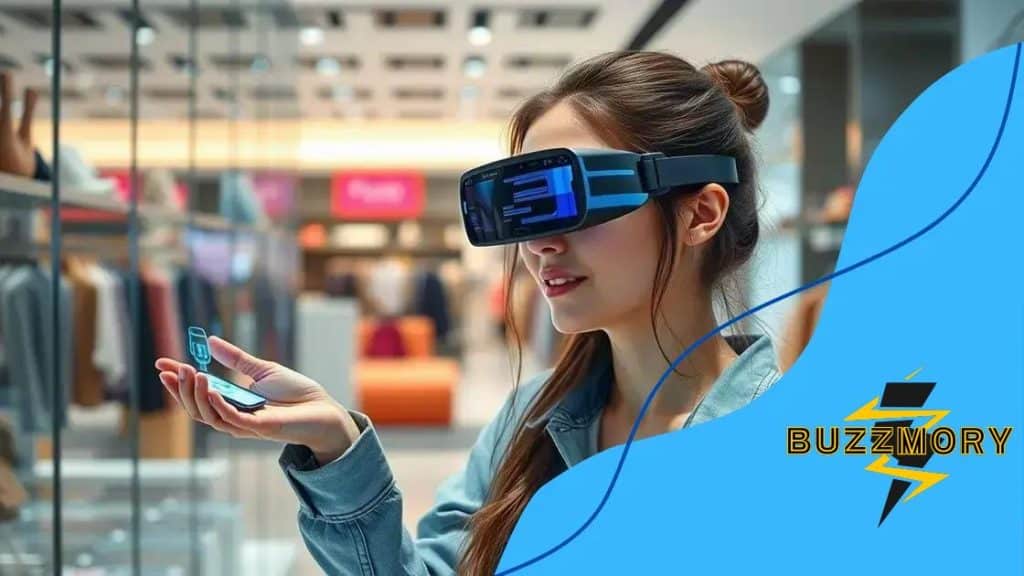How augmented reality is changing consumer shopping experiences

Augmented reality is transforming consumer shopping experiences by providing interactive and personalized interactions, allowing shoppers to visualize products in real-world settings, leading to increased confidence and satisfaction in their purchases.
How augmented reality is changing consumer shopping experiences is reshaping the way we buy products. Imagine trying on clothes virtually or visualizing furniture in your home before making a purchase. Curious? Let’s dive into this fascinating transformation.
Understanding augmented reality in retail
Understanding augmented reality in retail is crucial as it opens new possibilities for both consumers and businesses. This innovative technology enhances the shopping experience, making it more interactive and engaging.
What is augmented reality?
Augmented reality (AR) combines real-world environments with computer-generated elements. It overlays digital information onto the physical world, allowing users to see new content as they interact with their surroundings. In retail, AR offers exciting ways to visualize products and explore options like never before.
Benefits of augmented reality in retail
Using augmented reality in retail comes with numerous advantages:
- Consumers can try products virtually, reducing the need for physical samples.
- AR enhances customer engagement through interactive experiences.
- Retailers can provide personalized recommendations based on user preferences.
- It helps in overcoming geographical barriers by allowing virtual store visits.
Moreover, by incorporating AR into their strategy, retailers can create a distinctive brand identity. This not only attracts new customers but also retains existing ones. The technology empowers shoppers to make more informed decisions, as they can see how products fit into their lives.
As AR technology continues to evolve, the opportunities for its application in retail are endless. It transforms traditional shopping into a high-tech experience, bridging the gap between online and physical stores.
Ways augmented reality enhances product interaction
Ways augmented reality enhances product interaction are transforming the retail landscape. By creating immersive experiences, AR changes how consumers engage with products.
Virtual Try-Ons
With AR, shoppers can virtually try on clothes, accessories, or makeup. This feature provides a realistic view of how items will look without ever needing to physically try them on. As a result, customers feel more confident in their purchases.
Interactive Product Displays
Augmented reality allows for interactive product displays. Imagine scanning a product with your smartphone to unlock detailed information or see it in action. This method captures consumer interest and provides valuable insights, enhancing the overall shopping experience.
- Real-time product demonstrations.
- 3D models displayed on mobile devices.
- Detailed information overlayed on products.
- Comparison features for different items.
Moreover, AR can bring the product straight into the user’s environment. For instance, when looking to buy furniture, consumers can see how a chair fits in their living room through their phone or AR glasses. This seamless integration simplifies decision-making and reduces the chances of returns due to mismatched expectations.
As technology evolves, AR expands its capabilities, including personalized suggestions based on user behavior. This not only enhances interaction but also creates a more tailored shopping experience. Overall, the potential of augmented reality in product interaction is vast, and as more retailers adopt these tools, the shopping journey becomes increasingly engaging and informative.
Consumer benefits of using augmented reality

Consumer benefits of using augmented reality are significant and varied, making shopping more enjoyable and efficient. AR technology provides new ways for customers to engage with products before purchasing.
Enhanced Shopping Experience
One of the most notable benefits of AR is the enhanced shopping experience. It allows consumers to see products in a lifelike context, making it easier to visualize how an item will fit into their lives. For example, shoppers can visualize clothing on their own bodies or furniture in their living spaces.
Increased Confidence in Purchases
With augmented reality, consumers gain increased confidence in their purchasing decisions. They can try before they buy, which helps reduce uncertainty. This leads to fewer returns and greater satisfaction with purchases.
- Realistic views of products in real-life settings.
- Instant access to product information and reviews.
- Ability to compare different styles and options easily.
- Time savings by avoiding in-store trials.
Also, AR can provide personalized recommendations based on user preferences and previous behaviors. This tailored approach enhances loyalty and makes consumers feel valued. The technology seamlessly integrates with mobile devices, allowing for easy access anywhere and anytime.
Additionally, AR can create social experiences, allowing users to share their interactions with friends and family. This feature not only enhances enjoyment but also encourages discussion and feedback before making a decision. As AR continues to evolve, its benefits for consumers will only grow, making the shopping experience even more interactive and user-friendly.
Challenges in integrating augmented reality
Challenges in integrating augmented reality can be significant for retailers and brands. While the technology has many benefits, there are obstacles that must be addressed to ensure effective implementation.
Technological Limitations
One major challenge is the technological limitations that users may face. Not all consumers have access to the latest devices capable of supporting advanced AR applications. This can create a gap between those who can fully enjoy AR experiences and those who cannot.
Cost of Development
The cost of developing AR solutions can also be a hurdle. Creating high-quality augmented reality content requires skilled developers and designers, as well as technological investments. Small businesses may find these costs prohibitive, limiting their ability to compete in the AR space.
- High initial setup costs for AR technology.
- Need for ongoing maintenance and updates.
- Challenges in creating user-friendly interfaces.
- Training staff to use and promote AR effectively.
Moreover, integration into existing systems can be complex. Businesses may need to modify their platforms to accommodate AR features. This process can lead to operational delays and requires precise planning and resources. Additionally, there might be resistance from consumers who are not yet familiar with AR technologies, which can affect adoption rates. Education and user support are essential to encourage acceptance.
Privacy and security concerns also play a critical role in AR implementation. Collecting user data to personalize experiences raises questions about data protection and compliance with regulations. Businesses must navigate these issues carefully to gain consumer trust and ensure a smooth AR experience.
Future trends of augmented reality in shopping
Future trends of augmented reality in shopping promise exciting advancements that could reshape how consumers interact with products. As technology evolves, AR will continue to provide immersive experiences that enhance retail.
Advancements in AR Technology
The future of AR in shopping will be driven by advancements in technology. Improved hardware and better software are paving the way for more seamless experiences. Devices will become lighter, more affordable, and easier to use, making AR accessible to a broader audience.
Personalized Shopping Experiences
As retailers gather data on consumer preferences, AR will enable highly personalized shopping experiences. By using AI and machine learning, AR applications can recommend products based on individual tastes. Imagine trying on clothes that perfectly match your style with just a tap on your device.
- Integration of AR with virtual reality for an all-encompassing experience.
- Real-time collaboration features that allow friends to shop together remotely.
- Enhanced navigation in stores with AR maps guiding customers to products.
- Use of AR in marketing strategies to engage shoppers.
Moreover, the integration of social media with AR will further enhance shopping. Users will share their AR experiences online, influencing others’ purchasing decisions. Additionally, brands are likely to invest in creating virtual showrooms, where customers can explore products interactively. These elements will create a more vibrant and engaging shopping landscape.
As we move forward, sustainability will also play a role in AR developments. Retailers may use AR to showcase the eco-friendliness of their products, helping consumers make informed choices that benefit the planet. The future of shopping with augmented reality will not only be about convenience but also about making connections between brands and consumers.
FAQ – Frequently Asked Questions about Augmented Reality in Shopping
How does augmented reality enhance the shopping experience?
Augmented reality creates interactive and immersive experiences, allowing consumers to visualize products in their real-world environment before making a purchase.
What are the main benefits of using augmented reality for consumers?
AR provides personalized interactions, increases purchasing confidence, and reduces the chances of returns, leading to a more satisfying shopping experience.
What challenges do retailers face when integrating augmented reality?
Retailers may encounter technological limitations, high development costs, and the need for consumer education on using AR features effectively.
What future trends can we expect in augmented reality for shopping?
Future trends include improvements in AR technology, personalized shopping experiences, and the blending of social media for engaging retail interactions.





